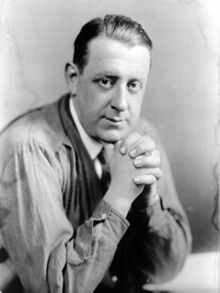On June 27, 1922, Henrik Willem van Loon won the inaugural Newbery Award for The Story of Mankind. A prolific author, van Loon was also a historian and journalist with a keen interest in American history and politics. Van Loon's activity in politics earned him attention from Franklin Delano Roosevelt--and Nazi leaders. A few facts you may not know about van Loon and The Story of Mankind:
 After earning an undergraduate degree from Cornell University and a PhD from the University of Munich, van Loon worked as a correspondent for the Associated Press. He covered the Russian Revolution of 1905 and Europe during World War I. Throughout the 1920's, van Loon would often return to German.
After earning an undergraduate degree from Cornell University and a PhD from the University of Munich, van Loon worked as a correspondent for the Associated Press. He covered the Russian Revolution of 1905 and Europe during World War I. Throughout the 1920's, van Loon would often return to German. - In 1919, publisher Horace Liveright asked van Loon to do a series of eight history books for children. The first, Ancient Man (1920), was a success. Encouraged by that and the success of HG Wells' two-volume Outline of History (1920), Liveright and van Loon decided to publish one large volume instead of eight smaller ones...and The Story of Mankind was born.
- The Story of Mankind has brief chapters on the history of western civilization, including the emergence of major religions; the development of writing and various art forms; and the evolution of the nation-state. Van Loon whittled down material for The Story of Mankind by asking himself, "Would the entire history of civilization be different without this event/person?"
- The book brought van Loon his first taste of literary celebrity. It sold well for years and was translated into multiple languages. In a subsequent edition, van Loon added an essay about the impact of World War I called "After Seven Years." His son, Gerrit van Loon made additions to the book after he passed away, and since Gerrit's death, various historians have updated the book.
- Some librarians opt to leave The Story of Mankind off their library shelves because it contains outdated information and culturally insensitive language. Nevertheless, most experts agree that the book provides an excellent example of what quality information books for children should do.
- Van Loon did the illustrations for The Story of Mankind himself. Though he had no formal training as an artist, he was constantly sketching and illustrated many of his own books and newspaper articles. Van Loon also illustrated books for other authors, notably Lucy Spague Mitchell's Here and Now Story Book (1936).
- In 1957, The Story of Mankind was adapted for film. It starred Ronald Colman. The all-star cast also included the Marx Brothers, which isn't surprising given van Loon's sense of humor. After he passed away, many obituaries called him the "laughing philosopher."
 In 1939, Finland was embroiled in the Winter War. Van Loon met with President Herbert Hoover and New York City Mayor Fiorello LaGuardia at a sympathy meeting on December 20 of that year. (At right are President Hoover, van Loon (standing), and La Guardia (right).
In 1939, Finland was embroiled in the Winter War. Van Loon met with President Herbert Hoover and New York City Mayor Fiorello LaGuardia at a sympathy meeting on December 20 of that year. (At right are President Hoover, van Loon (standing), and La Guardia (right). - During World War II, van Loon actively helped European refugees escape from Nazi-occupied zones. He also worked as a radio broadcaster during the war; his radio name, "Oom Henk," means "Uncle Hank." Queen Wilhelmina knighted him for his efforts in 1942.
- Van Loon launched a new radio show, "Deliberate Reflections," warning NBC that he planned to make controversial statements about the Nazi regime. He referred to the Nazis as the world's "most dangerous threat" and called Hitler the "three times perjured paranoiac." When Goebbels and his Propaganda Ministry heard it, they banned van Loon--and his books--from Germany.
- President Franklin Delano Roosevelt, impressed with van Loon's chutzpah, called the ban "the summit of permanent fame." The President invited van Loon and his wife to accompany him for a weekend, which van Loon loved. Afterward he wrote to FDR, "This dip into the Laboratory of Applied History was a most welcome diversion from the usual wood-pulp routine."
Van Loon's tireless political activism are matched by his wonderful contribution to children's literature. He helped to usher in a new appreciation for exceptional children's books. The Newbery Award remains one of the most respected awards and a fitting collecting focus for those who wish to build a personal library of excellent literature.









